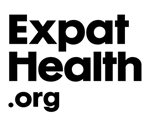Most illnesses and chronic conditions can be treated in New Zealand hospitals, with the exception of a few highly specialist areas (such as certain transplants), when it may be necessary to travel abroad. The standard of public health is generally high, although there are some differences between racial groups, with Maoris in particular suffering ill health more often than those of European origin.
New Zealanders tend to suffer more from alcohol-related diseases than Europeans, but less from smoking-related diseases. A disturbing trend in recent years has been that diseases associated with poverty, such as rickets and TB in children, are on the increase after being virtually wiped out. The infant mortality rate is almost six deaths per 1,000 live births (around average for OECD countries) and average life expectancy is 78 years.
New Zealand provides ‘free’ or subsidised healthcare to its citizens, permanent residents and certain visitors. The system is comparable to those in European countries such as France or Germany, where the state covers the bulk of the cost of medical treatment but expects most patients to make a contribution. ‘Free’ care isn’t as comprehensive as under the British National Health Service, which aims to provide free care to almost everyone, including emergency treatment for visitors. On the other hand, it’s nothing like that in the USA, where every last pill, potion and sticking plaster must be paid for.
The New Zealand Ministry of Health (www.moh.govt.nz ) is responsible for funding and providing state healthcare, which it delegates to District Health Boards (DHBs) whose job is to meet the government’s health objectives by spending their budgets in the most cost-effective way. DHBs use their funding to ‘buy’ healthcare services from various ‘suppliers’, including family doctors, hospitals, nursing homes and other health organisations.
This system has been in existence since 1993 and introduced the commercial market into the public healthcare sector. It has seen most hospitals reformed as Crown Health Enterprises (CHEs or ‘ cheeses’ in local slang), which are effectively in competition with each other to provide the best healthcare at the lowest cost. As each of the 21 DHBs has substantial freedom to adopt its own system and framework, there tends to be a lack of consistency throughout the country.
The state healthcare system has come under huge pressure in recent years due to an increasing demand for services amid severe financial constraints, as politicians have sought to reduce the spiralling health budget in order to fund tax cuts. A number of hospitals have been closed and the number of people on waiting lists for non-emergency treatment, once unknown in New Zealand, has soared to almost 100,000. There has also been disruptions to healthcare services as successive governments have experimented with various measures aimed at providing a better service for less money (a formidable task).
The latest healthcare innovation is the Health Information Strategy for New Zealand – launched in August 2005 – which aims to deal with current challenges, including the ageing population, the rising incidence of chronic diseases such as diabetes and cardiovascular disease, the emergence of new infectious diseases such as SARS, and the high cost of new technology and treatments.
The New Zealand public and media are concerned at a perceived lack of funding of the country’s state healthcare, and medical staff generally feel that they’re underpaid and obliged to work with over-stretched resources. There have been several high-profile cases of people needing urgent treatment having to wait too long.
The New Zealand Medical Association (NZMA, www.nzma.org.nz ) also highlights the shortage of rural GPs and professionals in some specialist areas, such as psychiatry, as well as the ‘brain drain’ of doctors from New Zealand who have accumulated vast student debts and are attracted by salaries and working conditions abroad.
Although you won’t be denied medical attention in New Zealand (assuming you don’t mind waiting), alternative treatments are also popular. A recent survey by Consumer magazine claimed that half of New Zealanders have tried alternative therapies, usually for conditions for which they had been seeing a ‘traditional’ doctor. The most popular alternative therapies are chiropractic, herbal medicine, homeopathy and osteopathy. New Zealand doctors are generally sympathetic to these therapies and occasionally refer patients to alternative practitioners.




